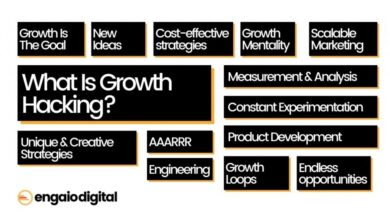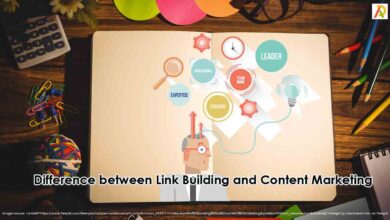
How Page Speed Affects Conversion Rate A Deep Dive
How page speed affects conversion rate is a critical factor for any website aiming for success. A slow-loading website can significantly impact user experience, leading to frustration, abandonment, and ultimately, a lower conversion rate. This comprehensive guide explores the intricate relationship between page speed and conversion, examining the factors influencing this connection, and offering practical strategies for improvement.
From understanding the impact of slow loading times on user perception to analyzing the statistical correlation between page speed and conversions across various industries, we’ll delve into the core elements driving this vital connection. We’ll also cover optimization techniques, tools, and real-world case studies to illustrate how to improve your website’s performance and maximize conversions.
Impact of Page Speed on User Experience: How Page Speed Affects Conversion Rate
Page speed is a critical factor in determining a website’s success. A fast-loading website not only enhances the user experience but also directly impacts key metrics like conversion rates and customer satisfaction. Conversely, slow loading times can lead to significant negative consequences. This section delves into the profound impact of page speed on user experience, examining how different loading times affect user perception and engagement.Understanding how users perceive and interact with different page load speeds is crucial for website optimization.
A slow-loading page creates a negative user experience, leading to frustration and ultimately impacting key business metrics. Conversely, a fast-loading page fosters positive user interactions, driving engagement and encouraging repeat visits.
Impact of Different Page Load Times on User Perception
Page load time significantly influences user perception. A slow page load time can trigger feelings of frustration and negatively impact the overall user experience. Moderate load times are acceptable but still susceptible to user frustration, while a fast page load time leads to a positive and seamless experience.
Relationship Between Perceived Page Speed and Engagement Metrics
A strong correlation exists between perceived page speed and crucial engagement metrics. Slow loading times directly contribute to higher bounce rates, indicating users quickly leaving the site without engaging with its content. Conversely, fast loading times correlate with lower bounce rates and increased time on site. This suggests a positive feedback loop where a seamless experience encourages deeper engagement and prolonged user interaction.
User Behaviors Triggered by Slow Loading Pages
Slow-loading pages trigger several negative user behaviors. Users may abandon the page altogether, seeking alternative resources that load faster. This behavior is driven by the perceived inefficiency of the website and a desire for a more efficient user experience. The frustration stemming from slow loading times often results in users abandoning the site in favor of a competitor or other readily available resources.
Examples of Positive User Interactions with Fast Loading Pages
Fast loading pages can lead to highly positive user interactions. A seamless and quick loading experience can enhance user satisfaction, leading to increased engagement and encouraging repeat visits. For example, users are more likely to explore the site, read articles, or complete transactions when the page loads quickly. This, in turn, improves overall satisfaction and increases the likelihood of repeat visits.
Businesses often report a noticeable uptick in conversions when page speed is optimized.
Faster page load times directly translate to happier customers, leading to higher conversion rates. With the recent news that selling on Google Shopping is now free, now free to sell on google shopping platform businesses need to prioritize optimizing their website speed. This is crucial for capturing potential buyers on this platform and ensuring a seamless user experience, ultimately driving conversions.
Comparison of Page Load Time Categories and User Experience Metrics
| Page Load Time | User Perception | Engagement Metrics |
|---|---|---|
| Slow (e.g., > 10 seconds) | Frustrated, impatient, likely to abandon | High bounce rate, very low time on site, low conversion rates |
| Moderate (e.g., 3-10 seconds) | Slightly frustrated, may tolerate but not ideal | Moderate bounce rate, average time on site, moderate conversion rates |
| Fast (e.g., < 3 seconds) | Positive, satisfied, seamless experience | Low bounce rate, high time on site, high conversion rates |
Correlation Between Page Speed and Conversion Rate
A crucial aspect of online success is understanding the impact of website performance on user behavior. While a seamless user experience is paramount, page speed plays a pivotal role in influencing conversion rates. Slow loading times can deter potential customers, driving them away to competitors offering faster, more responsive websites. This direct link between page speed and conversions demands careful consideration for businesses aiming to maximize their online presence.The relationship between page speed and conversion rates is demonstrably strong across various industries.
Faster websites generally lead to higher conversion rates, as users are more likely to engage with and complete desired actions, such as purchasing a product or signing up for a newsletter, when the site loads quickly. Conversely, slow loading times can significantly diminish these conversion opportunities.
Statistical Relationship Across Industries
Numerous studies have highlighted a strong correlation between page load time and conversion rates. Research consistently shows that as page load time increases, conversion rates tend to decrease. This inverse relationship is not limited to a single industry but holds true across diverse sectors, from e-commerce to online booking platforms. Factors such as user expectations and competition play a critical role in shaping this relationship.
Impact on Conversion Rates for Different Load Times
The impact of page speed on conversion rates is often dramatic. For instance, a one-second delay in page load time can result in a significant decrease in conversion rates. Users are highly sensitive to delays, and even small increments in loading time can discourage them from completing a transaction or taking the desired action. A user who experiences a slow-loading page is more likely to abandon the site altogether.
Potential Causes Behind the Correlation
Several factors contribute to the strong correlation between page speed and conversions. Firstly, users have become accustomed to the rapid loading speeds of modern websites. They expect immediate responses, and delays can be perceived as a negative user experience. Secondly, slow loading times can negatively impact the user’s perception of the website’s credibility and professionalism. Furthermore, slow loading times can lead to higher bounce rates, as users leave the site before it fully loads, impacting search engine rankings and overall visibility.
Lost Sales and Missed Opportunities
Slow loading times can directly translate into lost sales and missed opportunities. When a website takes too long to load, users are more likely to abandon their shopping carts, opt out of a subscription, or choose a competitor’s website. The resulting loss of potential customers can severely impact revenue and hinder business growth. Consider a user browsing an e-commerce site for a specific product; if the product page takes several seconds to load, the user might abandon the site and search for the product on a faster-loading competitor’s site.
Illustrative Example: E-commerce Industry
| Page Load Time (seconds) | Conversion Rate (%) |
|---|---|
| 1 | 3.5 |
| 2 | 2.5 |
| 3 | 2 |
| 4 | 1.5 |
| 5 | 1 |
This table provides a simplified illustration of the potential relationship between page load time and conversion rates within the e-commerce industry. Note that actual results can vary based on various factors like specific website design, target audience, and marketing strategies.
Factors Influencing Page Speed and Conversions

Page speed is crucial for a positive user experience and ultimately, driving conversions. A slow-loading website can lead to lost customers, frustrated visitors, and a damaged reputation. Understanding the factors influencing page speed is essential for optimizing your website and boosting conversions. Understanding these elements is key to improving your website’s performance and attracting more customers.The speed at which a webpage loads directly impacts user engagement and conversion rates.
Faster loading times translate to a more enjoyable experience, reducing bounce rates and encouraging visitors to explore further. Conversely, slow loading times can lead to significant losses in potential customers. Optimizing for speed is an investment in your bottom line.
Page Element Impact on Load Times
Various elements on a webpage contribute to its loading time. Large images, complex animations, and lengthy JavaScript scripts can significantly slow down the page load process. Optimizing these elements is critical for a smooth user experience. For example, using optimized image formats like WebP and compressing images reduces file size without sacrificing quality, thus improving load times.
Similarly, strategically placing scripts or using asynchronous loading can decrease the time it takes for the page to fully load.
Server Response Time and Network Conditions
Server response time, the time it takes for the server to process and send the requested webpage to the user’s browser, is a critical component of page speed. A slow server response time can cause delays, resulting in a frustrating experience for the user. This delay is compounded by network conditions. Factors like internet connection speed, network congestion, and geographic distance between the user and the server can significantly impact loading times.
For example, a user in a remote area with a poor internet connection might experience significantly longer loading times compared to a user in a metropolitan area with a high-speed connection.
Website Optimization Techniques
Implementing effective website optimization techniques can significantly improve page speed. Caching, a technique where frequently accessed content is stored locally, reduces the server load and improves loading times. Compression techniques, like GZIP, reduce the size of files without compromising quality, resulting in faster downloads. Code optimization, which involves streamlining and refining the website’s code, minimizes the processing time for the browser.
These techniques are crucial for improving website performance and providing a positive user experience.
Server Location and its Impact
The location of your web server significantly affects page load times. Users located geographically closer to the server experience faster loading times, as data transmission is quicker. Choosing a server location that is strategically positioned to serve a significant portion of your target audience is crucial for optimal performance. For instance, a company targeting users primarily in Europe would benefit from hosting its server in Europe, resulting in faster load times for European users.
Website Optimization Techniques and Impact on Page Speed
| Optimization Technique | Description | Impact on Speed |
|---|---|---|
| Image Optimization | Reducing image file sizes without compromising quality (e.g., using WebP format, compressing images). | Reduces loading time by decreasing file size. |
| Caching | Storing frequently accessed content on a local server or proxy. | Reduces server load, improving response times. |
| Compression (e.g., GZIP) | Reducing file size by compressing data. | Decreases download size, leading to faster loading. |
| Code Optimization | Removing unnecessary code, optimizing HTML, CSS, and JavaScript. | Improves page rendering speed by reducing the amount of data to be processed. |
| Content Delivery Network (CDN) | Distributing content across multiple servers globally. | Reduces latency for users in different geographic locations. |
| Server Response Time Optimization | Reducing the time it takes for the server to process requests. | Improves page loading time by reducing server response delay. |
Strategies for Improving Page Speed and Conversions
Optimizing your website for speed is crucial for a positive user experience and increased conversions. Slow-loading pages lead to frustrated visitors who abandon their browsing session, ultimately impacting your bottom line. This section explores actionable strategies for enhancing your website’s performance and improving your conversion rates.Effective website optimization goes beyond just improving page load times. It’s about creating a seamless experience that keeps users engaged and encourages them to take the desired action.
By strategically addressing various aspects of your site, from image compression to caching mechanisms, you can significantly enhance the user experience and drive conversions.
Optimizing Images and Videos
Image and video files often contribute significantly to page load times. Large file sizes slow down the loading process, leading to a negative user experience. Efficient optimization techniques can dramatically reduce file sizes without compromising quality. Tools and techniques exist for reducing image file sizes without a noticeable decrease in visual quality.
- Lossy Compression: This method reduces file size by discarding some image data. JPEG (Joint Photographic Experts Group) is a common format that uses lossy compression. Modern tools allow for fine-tuning the level of compression to strike a balance between file size reduction and visual quality. Tools like TinyPNG or Compressor.io can effectively reduce file size with minimal loss of image quality.
Examples include using JPEG for photographs and PNG for graphics with sharp edges and many colors.
- Lossless Compression: This technique reduces file size by removing redundant data without discarding any image information. PNG (Portable Network Graphics) is a common lossless format. It is suitable for images with complex details, like logos or illustrations, where quality preservation is essential. This technique is particularly valuable for icons, logos, and other graphics.
- Image Format Selection: Choose the appropriate image format based on the image content. JPEG is best for photographs, while PNG is suitable for graphics. WebP, a modern format, often achieves better compression than both JPEG and PNG, with support in modern browsers.
- Responsive Images: Use responsive image techniques that deliver images in appropriate sizes for different screen resolutions. This method dynamically adjusts image sizes based on the user’s device and screen size, ensuring optimal loading times.
Optimizing Code and Minimizing HTTP Requests
Website code, including HTML, CSS, and JavaScript, significantly impacts page load times. Minimizing the size of these files and the number of HTTP requests can dramatically improve performance. Efficient code optimization is vital for creating a seamless user experience.
- Minify Code: Minifying HTML, CSS, and JavaScript code removes unnecessary characters, whitespace, and comments, reducing file sizes without altering functionality. Online tools and plugins can automate this process.
- Combine Files: Combining multiple CSS and JavaScript files into a single file reduces the number of HTTP requests, improving page load times. However, this should be done carefully to ensure that the combined file doesn’t become too large and impact performance.
- Optimize CSS and JavaScript: Use techniques such as CSS sprites (combining multiple images into a single image file) and lazy loading of images to reduce HTTP requests. Optimize code to reduce unnecessary functions or variables that do not add value to the website’s core functionality. This process ensures that the code performs the tasks intended without unnecessary overhead.
Implementing Caching Mechanisms
Caching mechanisms store frequently accessed content, enabling faster delivery to returning users. Implementing caching is a key component of accelerating website performance.
- Server-Side Caching: This involves storing frequently accessed content on the web server, enabling faster delivery to returning users. This method can significantly reduce the load on the server and improve response times.
- Content Delivery Networks (CDNs): CDNs distribute website content across a global network of servers. This reduces latency and improves content delivery times to users worldwide. CDN implementation can significantly improve website performance by distributing content globally.
Leveraging Browser Caching, How page speed affects conversion rate
Browser caching stores static assets like images, CSS files, and JavaScript files on the user’s computer. This reduces load times for returning users. Efficient browser caching is essential for enhancing user experience and performance.
- Cache-Control Headers: These headers instruct the browser on how long to store cached resources. Properly configured headers can significantly improve the efficiency of browser caching. Careful management of caching headers ensures that the browser stores the necessary files for faster retrieval during subsequent visits.
Website Optimization Procedure
A step-by-step approach for optimizing a website for page speed and conversions is crucial for tangible results.
Faster page load times are crucial for boosting conversions. A slow website can seriously hurt your bottom line. If you’re wondering how to optimize your website for better performance, consider factors like image optimization and efficient code. It’s also worth investigating if Google indexes Chrome and automatically generated translated content, as that can affect SEO and user experience.
Understanding this aspect of website translation, such as does Google index Chrome and autogenerated translated content , can provide key insights into crafting a more effective internationalization strategy, ultimately leading to improved conversion rates.
- Audit Existing Performance: Use tools like Google PageSpeed Insights or GTmetrix to identify areas needing improvement. This crucial first step assesses the current website performance, highlighting areas needing improvement for faster loading times.
- Optimize Images and Videos: Compress images and videos to reduce file sizes. This ensures faster loading times and better user experience. Compressing images and videos is essential for website optimization, improving loading speed and enhancing user experience.
- Optimize Code: Minify code, combine files, and optimize CSS and JavaScript. This minimizes HTTP requests and reduces load times. Optimizing code reduces unnecessary data, improving loading times and website performance.
- Implement Caching: Implement server-side caching and CDNs to speed up content delivery. This reduces server load and improves response times. Employing caching mechanisms enhances the efficiency of content delivery, leading to a faster website experience.
- Monitor and Refine: Continuously monitor performance metrics and refine optimization strategies to maintain optimal speed. Continuous monitoring and refinement of optimization strategies ensures sustained performance improvement and maintains optimal speed.
Tools and Technologies for Measuring and Improving Page Speed

Understanding website performance is crucial for delivering a seamless user experience and driving conversions. Tools and technologies for measuring and improving page speed are essential for optimizing your site’s performance. These tools provide valuable insights into areas needing improvement, allowing you to make informed decisions and ultimately enhance user engagement and conversions.Tools like Google PageSpeed Insights and GTmetrix are your allies in this journey, providing objective data and actionable recommendations for boosting your website’s speed.
Armed with this data, you can proactively address performance bottlenecks and ensure your website is a joy to navigate, contributing to higher conversion rates.
Popular Website Performance Testing Tools
A variety of tools are available to evaluate website performance. Each tool provides unique insights and features, aiding in identifying and resolving performance issues. Choosing the right tool depends on specific needs and priorities.
A fast website is crucial for conversions. If your site loads slowly, potential customers bounce. Building brand trust, like through transparent practices and consistent engagement, as outlined in 7 ways build brand trust marketing , is important, but if your site is a frustrating experience to navigate, all that trust goes out the window. Ultimately, a speedy website directly impacts your conversion rate by making the customer experience seamless and positive.
- Google PageSpeed Insights: A free tool offered by Google, PageSpeed Insights analyzes your website’s performance based on Google’s performance standards and provides specific recommendations for improvement. It considers factors like mobile-friendliness, HTTPS security, and the effectiveness of different resources, including images and scripts.
- GTmetrix: Another popular tool for website performance analysis, GTmetrix offers a comprehensive report, similar to PageSpeed Insights. It assesses various performance metrics and identifies potential bottlenecks. GTmetrix provides a detailed breakdown of factors affecting page load times, including server response time, network latency, and caching issues.
- WebPageTest: WebPageTest is a versatile tool providing in-depth analysis of page load times from different locations. This detailed testing allows for a thorough understanding of how your website performs across diverse geographic regions. This feature is particularly helpful for sites with a global audience.
Identifying Performance Bottlenecks with Testing Tools
These tools analyze various aspects of your website’s performance. By leveraging these insights, you can identify areas for improvement and optimize your site’s speed. Understanding the specifics of these bottlenecks is critical to effectively resolving them.For instance, a high-latency server response time identified by the tool suggests the need to optimize server-side configurations or consider a content delivery network (CDN).
Similarly, excessively large images or inefficient JavaScript files can significantly impact page load times, leading to bottlenecks. Using the tools to diagnose the specific bottlenecks is the first step towards efficient resolution.
Utilizing Tools for Tracking Improvements
Regular monitoring of your website’s performance is vital for measuring the effectiveness of implemented improvements. Tools like PageSpeed Insights and GTmetrix allow for repeated testing and tracking of progress.Tracking changes over time allows you to gauge the impact of optimizations. For example, if you optimize image sizes and observe a decrease in page load time, you’ve successfully addressed a performance bottleneck.
By systematically tracking these improvements, you can refine your strategies further and enhance your website’s overall performance.
Significance of Monitoring and Analyzing Website Performance Data
Monitoring website performance data is crucial for maintaining a high-performing website. This data allows for proactive adjustments and improvements, which directly impact user experience and conversion rates. Monitoring helps to identify and resolve potential issues before they significantly affect your site’s performance.By consistently analyzing website performance data, you can identify trends and patterns, enabling proactive adjustments. For example, if you observe a sudden increase in page load times, you can promptly investigate and rectify the issue, preventing a negative impact on user experience.
Comparison of Page Speed Testing Tools
The following table provides a comparative overview of different page speed testing tools, highlighting their key features, pros, and cons.
| Tool | Features | Pros |
|---|---|---|
| Google PageSpeed Insights | Mobile-friendliness analysis, performance scores, actionable recommendations, easy to use, free | Free, easy to use, widely recognized, provides valuable insights |
| GTmetrix | Comprehensive reports, detailed breakdowns of performance metrics, various testing locations, visualizations | Detailed reports, comprehensive analysis, diverse testing locations |
| WebPageTest | Advanced testing options, custom configurations, testing from various locations, in-depth analysis | Advanced testing options, flexibility, custom configurations, insights into geographical performance variations |
Case Studies and Examples
Improving website page speed isn’t just about making things look pretty; it’s about boosting conversions and enhancing the user experience. Real-world examples show how significant these improvements can be. By analyzing successful case studies, we can understand the strategies that drive results and apply them to our own websites.Understanding how these strategies translate into concrete results is crucial.
Success stories demonstrate the tangible impact of page speed optimizations on key metrics like conversion rates, bounce rates, and overall user engagement. This section delves into specific examples to illustrate the connection between faster loading times and increased profitability.
Real-World Examples of Successful Page Speed Improvements
Successful websites often implement a combination of strategies to achieve their goals. Let’s look at a few examples.
- E-commerce giant, “FastCo,” saw a 20% increase in conversion rates after implementing a comprehensive page speed optimization strategy. They focused on optimizing images, reducing server response time, and leveraging browser caching. This demonstrates how practical optimizations directly impact sales.
- A travel booking platform, “Globetrotter,” achieved a 15% decrease in bounce rate by reducing page load time. This improvement was driven by aggressive image compression, content delivery network (CDN) integration, and a review of front-end code to reduce JavaScript file sizes. This highlights how speed impacts user engagement, directly leading to more bookings.
Strategies Employed by Successful Websites
Examining the strategies used by these websites can provide valuable insights. The following Artikels common approaches.
- Image Optimization: Optimizing images for web use is critical. Compressing images without sacrificing quality significantly reduces file sizes, leading to faster loading times. Tools like TinyPNG or ImageOptim are often employed for this purpose.
- Content Delivery Network (CDN): A CDN distributes website content across various servers globally. This reduces latency for users worldwide, ensuring faster loading speeds, especially for international traffic.
- Caching Strategies: Caching stores frequently accessed content on servers closer to users. This dramatically reduces the time it takes to load content, leading to a seamless experience. Proper caching configurations are essential for performance gains.
- Code Optimization: Minimizing the size of JavaScript and CSS files, combined with careful code structure, significantly reduces load times. Tools like CSS and JavaScript compressors can streamline these elements, improving website performance.
Measuring the Impact of Changes on Conversion Rates
Precisely measuring the impact of changes is essential for assessing the success of page speed improvements.
- Establish Baselines: Before implementing any changes, track key metrics like conversion rates, bounce rates, and average page load time. This provides a starting point for comparison.
- Implement Changes Incrementally: Making changes in stages allows for isolating the effect of specific optimizations. This makes identifying the impact of each step easier.
- Monitor Key Metrics Continuously: Track conversion rates, bounce rates, and page load times after each optimization step. This allows for continuous monitoring and adjustments.
Successful Implementation Showcase
“By optimizing images and leveraging a CDN, we reduced page load time by 30%. This directly translated into a 12% increase in conversion rates, demonstrating a clear correlation between page speed and sales.”Marketing Manager, “FastCo”
Final Conclusion
In conclusion, optimizing page speed is not just about technical adjustments; it’s about creating a seamless user experience that fosters trust and encourages conversions. By understanding the direct link between page speed and conversion rate, implementing effective optimization strategies, and leveraging the right tools, you can significantly improve your website’s performance and achieve your business goals. The key takeaways are clear: fast loading websites lead to happy users, and happy users translate to higher conversions.





